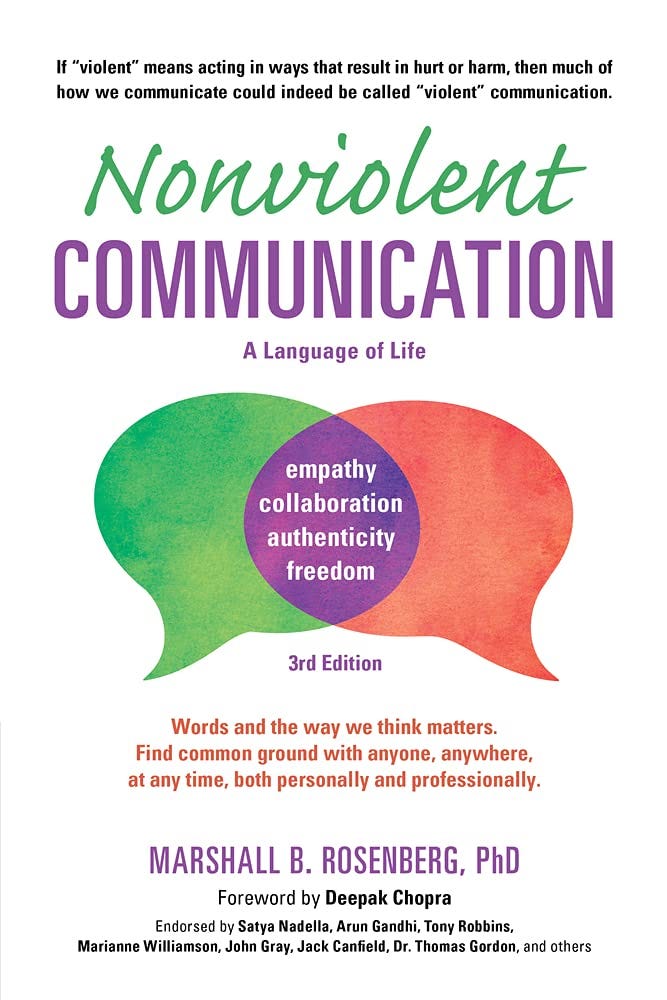Nonviolent Communication: Life-Changing Tools for Healthy Relationships
Ending Conflict With Empathy? Learn a Language That Can Heal Broken Connections
Dear friends, good evening! I am Tom Niklas, a seasoned writer and book reviewer. 😁 Welcome everyone to the ReadVault club, join us in reading 52 books a year together!
Today I’m honored to be here to share with you my thoughts on Marshall Rosenberg’s groundbreaking book, <Nonviolent Communication: A Language of Life>. This book has truly shifted the paradigm on how we interact with others, and I hope my words today will inspire you to pick it up and explore its wisdom for yourselves.
First, a little bit about the book and its author. Nonviolent Communication was published in 1999 by Dr. Marshall Rosenberg, an American psychologist and mediator who devoted his life’s work to developing compassionate methods of resolving conflict. Dr. Rosenberg traveled the world spreading his approach, including notable visits to turbulent regions like Israel and Palestine where he led transformative reconciliation workshops between conflicting groups.
So what exactly is Nonviolent Communication? In essence, it is a framework for interacting with others in a way that leads to mutual understanding, harmony and getting everyone’s needs met. As the name suggests, it provides an alternative to communication patterns like criticism, demands and blaming judgments which often spark defensiveness and discord. Instead, Nonviolent Communication cultivates empathy for oneself and others.
At its core, Nonviolent Communication consists of four key components:
First, making observations free of evaluation and interpretation. We simply state the facts of what we observe happening, rather than mixing in judgments about whether it’s good or bad.
Second, identifying and expressing feelings triggered by these observations. We connect to our authentic emotions and articulate them transparently.
Third, understanding the universal needs behind the feelings. Feelings arise when certain human needs are met or unmet, so we link the two.
Keep reading with a 7-day free trial
Subscribe to ReadVault to keep reading this post and get 7 days of free access to the full post archives.



